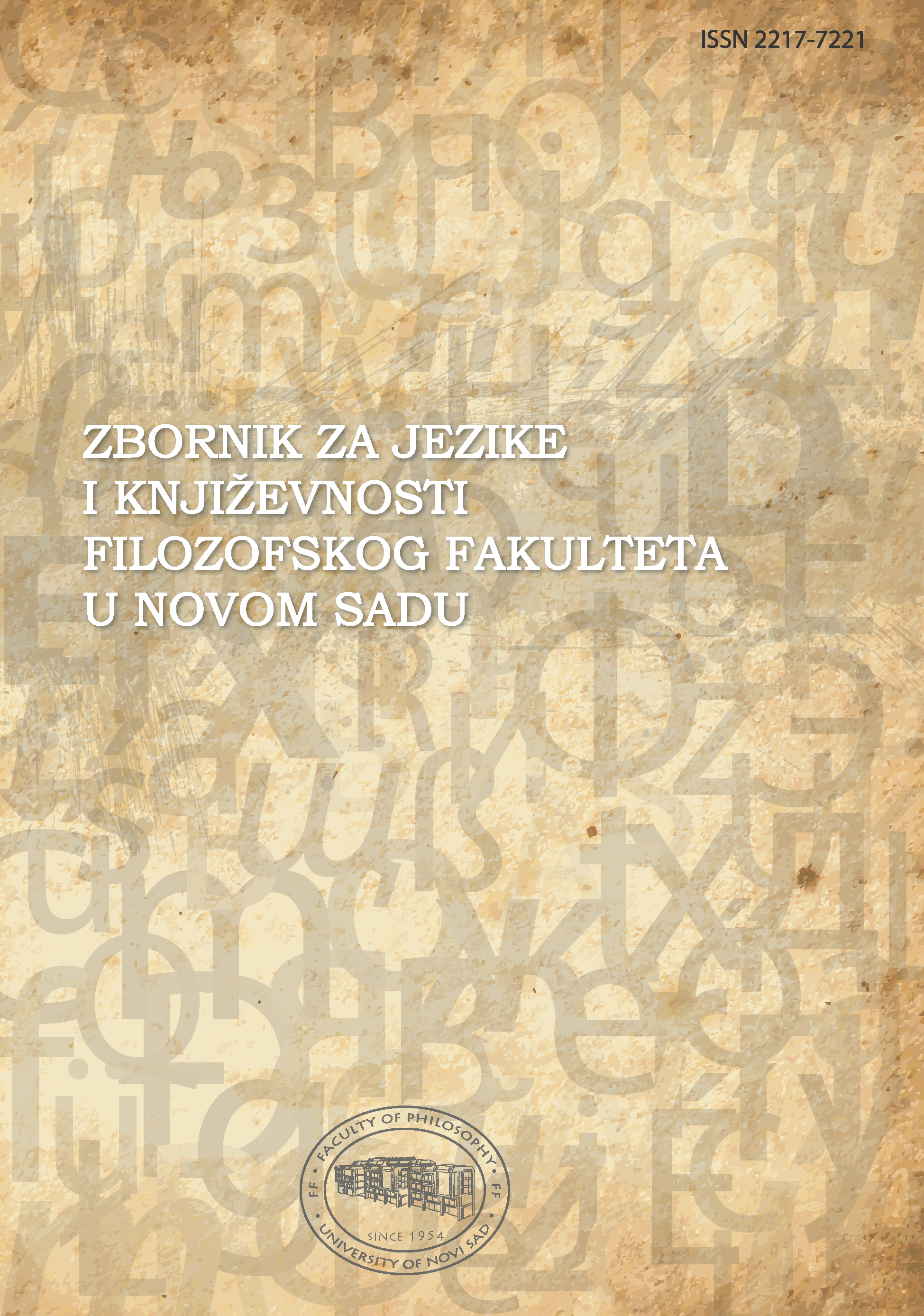SLIKOVNE SHEME U POSLOVICAMAKOJE SADRŽE SOMATIZME U ENGLESKOM I SRPSKOOM JEZIKU: IZ KOGNITIVNOLINGVISTIČKE PERSPEKTIVE
IMAGE SCHEMAS IN ENGLISH AND SERBIAN PROVERBS CONTAINING SOMATISMS:FROM COGNITIVE LINGUISTIC PERSPECTIVE
Author(s): Slađana D. MandićSubject(s): Language and Literature Studies
Published by: Филозофски факултет, Универзитет у Новом Саду
Keywords: proverbs; somatisms; cognitive linguistics; image schemas; English language; Serbian language.
Summary/Abstract: This paper has dealt with the analysis of image schemas CONTAINER, FORCE, BALANCE, CENTER–PERIPHERY, UP–DOWN, and OBJECT (Johnson 1987) in English and Serbian proverbs containing somatisms like Place one’s head in the lion’s mouth in English, and Staviti glavu na kocku in Serbian. The research is based on the corpus of 30 English and Serbian proverbs equally. The main aim of the research is to define dominant metaphoric patterns which motivate the usage of body parts in proverbs, as well as to present image schemas through the embodiment principle which explains how abstract concepts are motivated by our physical experiences (Lakoff & Johnson 1980). Moreover, we understand the world through the shapes and movements of our own body parts. The results of the analysis show there is a high degree of correspondence between the two contrasted languages, English and Serbian, in respect of the ways the speakers of both languages conceptualize the world around them by using alike image schemas and conceptual metaphors based on the interaction of human body and the environment.
Journal: Zbornik za jezike i književnosti Filozofskog fakulteta u Novom Sadu
- Issue Year: 9/2019
- Issue No: 9
- Page Range: 11-32
- Page Count: 21
- Language: Serbian

